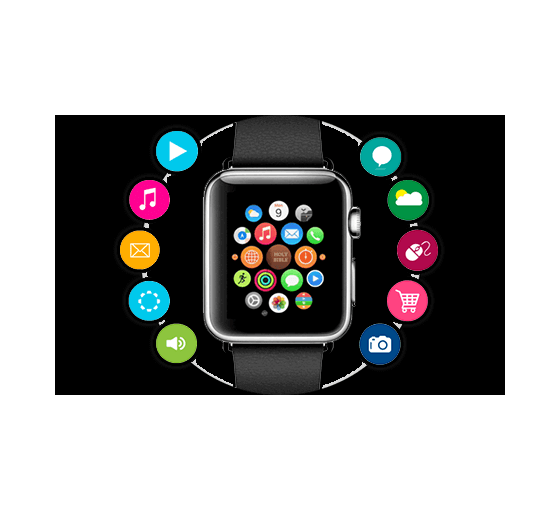
The wearable app development industry is rapidly evolving, transforming the way we interact with our devices and the world around us. From fitness trackers to smartwatches, wearables are becoming an integral part of our daily lives. The future of wearable app development holds immense potential, driven by advancements in technology, user expectations, and innovative applications. In this blog, we will explore the key trends, challenges, and opportunities in wearable app development, providing a comprehensive guide for developers and tech enthusiasts.
Introduction to Wearable Technology
Wearable technology refers to electronic devices designed to be worn on the body, either as accessories or embedded into clothing. These devices are equipped with sensors, connectivity features, and software applications that provide a range of functionalities, from health monitoring to communication and entertainment.
The Rise of Wearable Devices
Evolution of Wearable Technology
Wearable technology has come a long way since the early days of digital watches and basic fitness trackers. Today, wearables encompass a wide variety of devices, including:
- Smartwatches: Devices like the Apple Watch and Samsung Galaxy Watch offer a blend of health monitoring, communication, and entertainment features.
- Fitness Trackers: Devices like Fitbit and Garmin are popular for tracking physical activities, heart rate, sleep patterns, and more.
- Smart Glasses: Augmented reality (AR) glasses like Google Glass and Microsoft HoloLens are paving the way for immersive experiences.
- Smart Clothing: Integrating sensors and connectivity into clothing for health monitoring and enhanced athletic performance.
Market Growth and Trends
The wearable technology market is experiencing significant growth. According to industry reports, the global wearable market is projected to reach $81.5 billion by 2024. Key trends driving this growth include:
- Health and Fitness: Increasing awareness of health and wellness is driving demand for fitness trackers and smartwatches with advanced health monitoring features.
- Personalization: Users are seeking personalized experiences, leading to the development of apps that cater to individual preferences and needs.
- Integration with IoT: Wearables are becoming part of the broader Internet of Things (IoT) ecosystem, enabling seamless connectivity and data exchange between devices.
Key Trends in Wearable App Development
Health and Wellness Applications
Health and wellness applications are at the forefront of wearable app development. These apps leverage the sensors in wearables to provide real-time health data, such as heart rate, blood oxygen levels, and sleep patterns. Examples include:
- Fitness Apps: Track workouts, set goals, and monitor progress.
- Health Monitoring Apps: Monitor vital signs, manage chronic conditions, and provide alerts for medical emergencies.
- Sleep Tracking Apps: Analyze sleep patterns and provide insights for better sleep quality.
Enhanced User Experience
User experience (UX) is a critical factor in the success of wearable apps. Developers are focusing on creating intuitive, user-friendly interfaces that provide a seamless experience. Key considerations include:
- Minimalistic Design: Simplified interfaces that are easy to navigate on small screens.
- Voice Commands: Integration of voice assistants like Siri and Google Assistant for hands-free operation.
- Haptic Feedback: Providing tactile feedback through vibrations for notifications and interactions.
Integration with AI and Machine Learning
Artificial intelligence (AI) and machine learning (ML) are playing a significant role in wearable app development. These technologies enable wearables to provide personalized recommendations, predictive insights, and advanced data analytics. Examples include:
- Personalized Fitness Plans: AI algorithms analyze user data to create customized workout plans.
- Predictive Health Insights: ML models predict potential health issues based on historical data.
- Smart Notifications: AI-driven notifications that prioritize important information and reduce distractions.
Challenges in Wearable App Development
Hardware Limitations
Wearable devices have inherent hardware limitations, including small screens, limited processing power, and battery constraints. Developers must optimize their apps to function efficiently within these limitations while providing a rich user experience.
Data Privacy and Security
With wearables collecting sensitive health and personal data, ensuring data privacy and security is paramount. Developers must adhere to stringent data protection regulations and implement robust security measures to safeguard user information.
Compatibility and Connectivity
Wearables often need to connect and sync with other devices, such as smartphones and tablets. Ensuring seamless compatibility and connectivity across different platforms and operating systems can be challenging.
Opportunities in Wearable App Development
Expanding Market Segments
The wearable market is diversifying, creating opportunities for app developers to target niche segments. For instance, wearables for elderly care, children’s safety, and professional athletes offer unique development prospects.
Innovative Applications
The future of wearable app development lies in creating innovative applications that go beyond traditional use cases. Potential areas include:
- Augmented Reality (AR) Experiences: Developing AR apps for smart glasses to enhance productivity and entertainment.
- Smart Clothing Applications: Leveraging smart textiles for advanced health monitoring and interactive experiences.
- Enterprise Solutions: Creating wearables for industry-specific applications, such as remote assistance in manufacturing and logistics.
Conclusion
The future of wearable app development is bright, with endless possibilities for innovation and growth. As technology continues to advance, wearable devices will become even more integrated into our daily lives, providing valuable insights and enhancing our experiences. By staying informed about the latest trends and overcoming development challenges, developers can create impactful wearable apps that revolutionize connectivity and improve the quality of life for users.
In conclusion, the wearable technology landscape is evolving rapidly, offering exciting opportunities for developers and businesses alike. Embracing the future of wearable app development means staying ahead of trends, leveraging cutting-edge technologies, and focusing on user-centric design. Whether you are a developer looking to create the next breakthrough app or a business seeking to capitalize on wearable technology